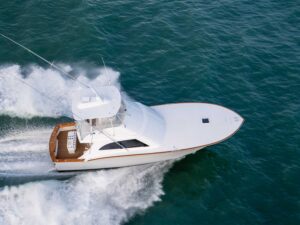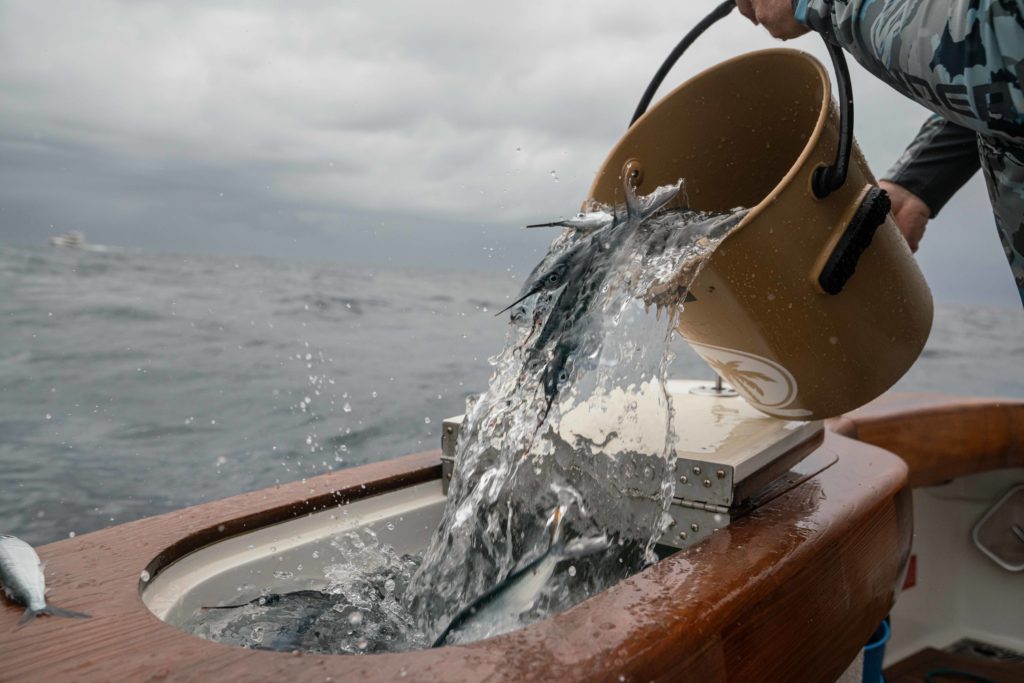
At a time when even spouses can be customized, it should be no surprise that there is a demand for personalized, high-end gear in sport fishing. We all like the idea of having tackle designed especially for us—high-performance gear that meets our needs while also fitting our personal aesthetic. While items such as like rods, lures, and gaffs immediately come to mind, there is another less-obvious tool that can also now be outfitted to match your vibe.
This generally topless tool’s smooth curves and 5-gallon depth ensures that it is well-suited for countless jobs: tote, trash can, bait-rigging station, portable seating and dunk-a-roo host. While the bucket’s job remains dirty, a new approach to design and build has these unsung heroes of the cockpit lasting longer and looking good. Although the bucket may have come from humble beginnings, it is lowly no longer.
Bucket History
We’re not exactly sure when buckets first appeared on the scene, but the earliest depictions of these containers were discovered in carvings from 3,200 BC. Since then, bucket design has evolved quite a bit. Early buckets were made with wood, clay, or animal skins, but much later, folks turned to metal. It wasn’t until the late 1960s that plastic buckets hit the market with an explosion in bucket sales and engineering to follow.
Just Google-search the term “fishing bucket” and you’ll return over 38 million results. It’s safe to say that there are numerous options available to the angler. When perusing these options sold through tackle shops or online stores, you’ll find a wide range of price points based on a variety of features, such as built-in rod holders, bottom grip, fancy colors, and specialized handles.
The Garden Variety
Some sport-fishing boats still turn to the old classic: the garden-variety bucket that you might expect to buy from Home Depot or your local hardware store. These simple, plastic buckets typically have a metal handle with a plastic sleeve so they are more comfortable in hand. I never thought I’d find myself calling out a bucket for not being very attractive, but here I am, doing just that. While these inexpensive buckets are fully functional, they don’t necessarily make the prettiest picture on deck. They also don’t always last very long, often cracking over time or becoming a source of frustration when the handle pulls out. Regardless of these issues, they can still get the job done just fine.
The Tournament Giveaway
When I first got involved in billfish tournaments, I didn’t quite realize the value of a bucket. It didn’t take long for that to change. As folks line up to register, they are always glad to pick up the suite of swag items gifted by the tournament. Free buckets seem to get a warm reception every time they are offered. They’re just critical to have on board, whether for soaking ballyhoo, washing down the deck, or even holding supplies for cleaning the head.
Since nobody seems to shy away from an opportunity at getting a free bucket during a tournament, they also make for excellent marketing tools. Tournament sponsors slap a logo on a free bucket and they’re suddenly advertising to thousands. Add a nice rope handle and you’ve got yourself a coveted freebie.
Yeti LoadOut
One year during the Virginia Beach Billfish Tournament, every participating boat received a free Yeti LoadOut bucket. That was a game-changing moment in bucket history. OK, perhaps that’s a touch dramatic, but folks did get a taste for the benefits of a high-performance bucket engineered to be tough, with some ultimately deciding to outfit their boats with additional Yetis. Bonus: They always look pretty darn good.
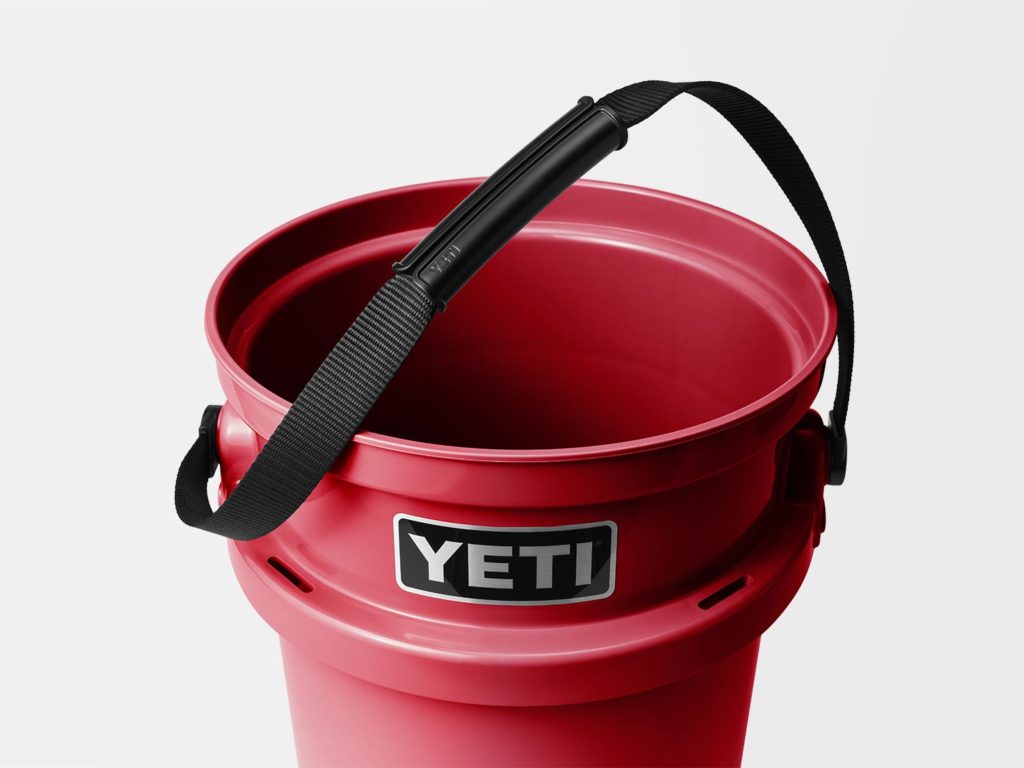
Since the walls of the Yeti LoadOut are twice as thick as generic models and constructed of high-density polyethylene plastic, it boasts a 300-pound capacity. To add to this flex, the bucket has multiple accessories, including a lid, utility belt, and caddy, all which are sold separately. Another thing that sets this one apart from generic models is that the buckets don’t get stuck together when stacked. And lastly, the grip on the bottom of the bucket helps to prevent it from sliding around or tipping over on a rolling deck.
Hooker Electric
It’s not really fair to compare Hooker Electric’s bucket to generic models. The company’s Live Bait Tuna Tube Bucket likely won’t ever be used to toss your trash or to dunk your head in ice water and then shotgun a beer. Instead, this bucket is designed for a particular purpose: to keep large baits alive and frisky.
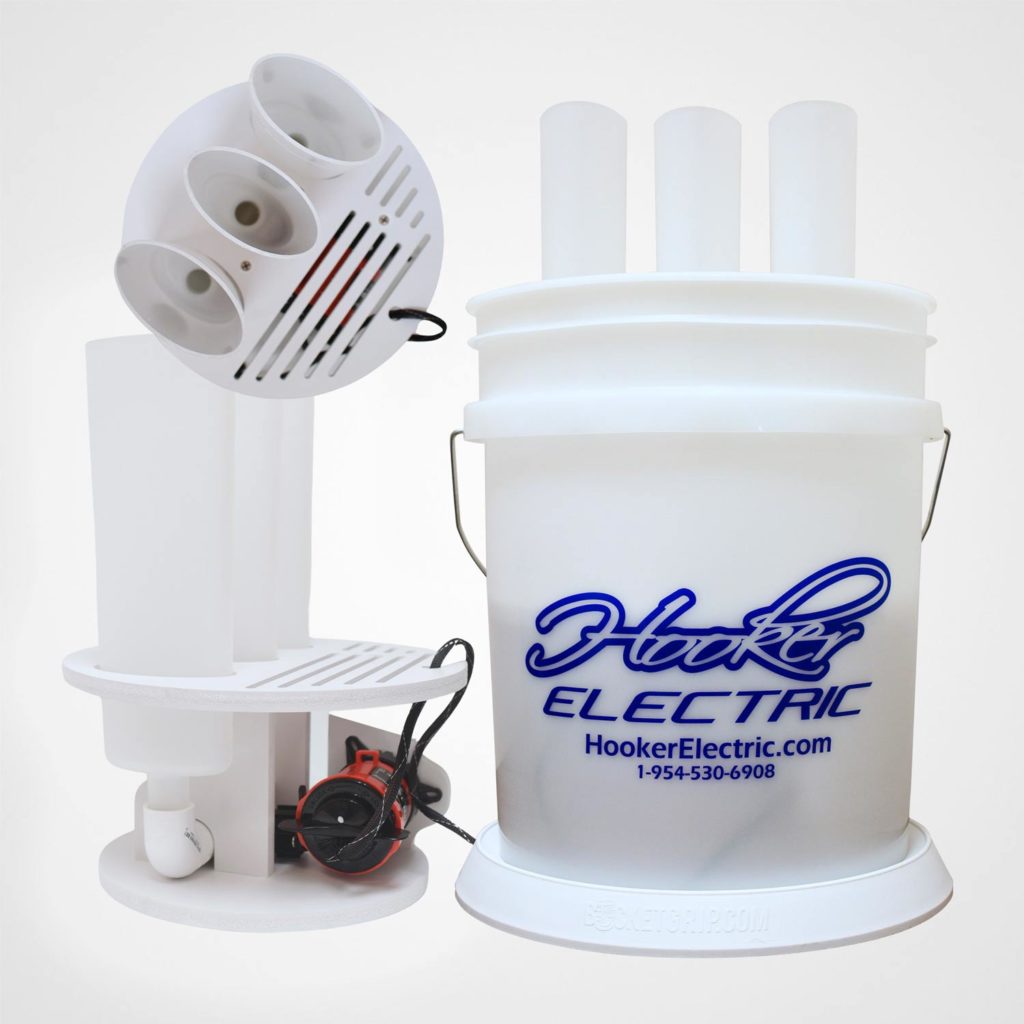
Here’s the deal: An internal submersible water pump cycles water through the 5-gallon bucket, keeping it cool and aerated. Just place your bait head-first in one of the three tubes and the bucket’s system will take care of the rest. The bucket also comes equipped with some nice added features, such as a nonskid grip base made of a soft rubber. Pro tip: Baits can be pre-rigged with hooks already bridled without worry of tangles, just pitch and go.
Huck Performance Buckets
Of all of the many high-end bucket options available on the market, the Huck Performance Bucket seems to offer the greatest amount of customization. Available in numerous colors, and handles that mirror your gold leaf of a transom, these buckets can be further customized with the boat’s name or logo using 10-year rated outdoor extreme labels.
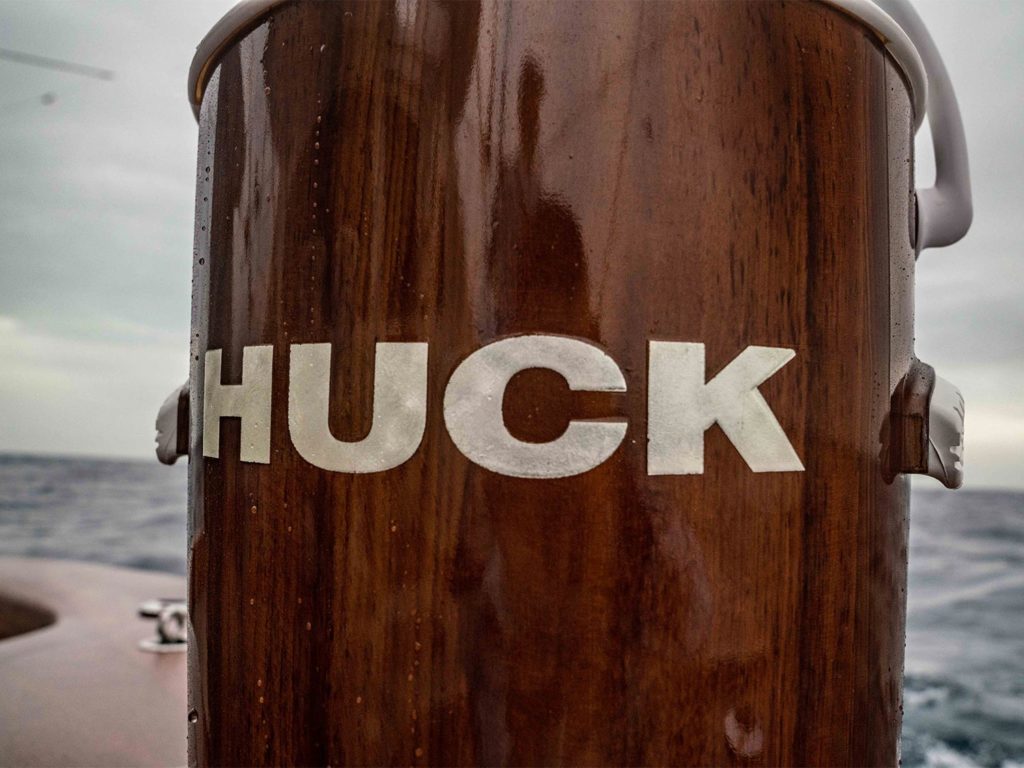
Much like the labels used to customize them, Huck Performance Buckets are built to last. They are made with SpryTech, a high-performance, flexible plastic made to withstand an everyday beating. Known as the bucket on steroids, the Huck Performance Bucket has a reputation of being extremely durable. The handle alone boasts a breaking strength of over 1,000 pounds. Working with the same materials used in the boots of the US military, each bucket has nonskid feet to keep it from sliding around the cockpit.
In addition, the multiple handles on this model are so well crafted that it’s difficult to mention all of the details here. The Huck team even modeled certain features after the shell of an alligator snapping turtle to prevent wet hands from losing their grip on the bucket. There is most definitely a science behind the design, which has been carefully tailored to meet an angler’s every need on the water or on the dock.
Read Next: Check out these cockpit essentials for marlin fishing.
Buckets of Choices
Whether you plan to stick with the basic bucket, or you’re interested in something more high-end and customizable, there are ample options available to fishermen. As industry needs change, I’d expect bucket designs will too. Perhaps future models will offer an automated feature that gives the bucket the ability to move about the cockpit and do work.
Jokes aside, the craftsmanship and engineering behind these important tools is impressive. I never had to think about what could be done to make a bucket better. But people much smarter and more creative than I am are coming up with cool solutions to routine problems. These improvements really do seem to make life easier for mates, captains, and owners, which really seems to be the whole point of a bucket anyway.
